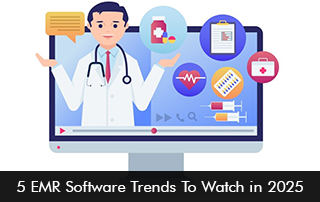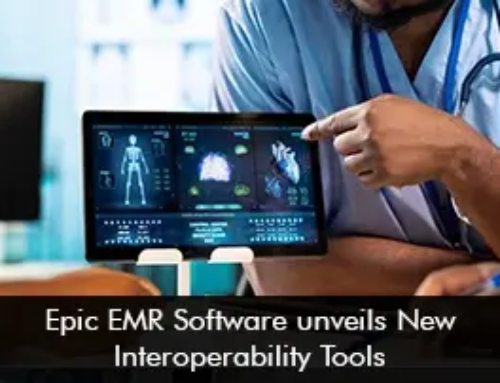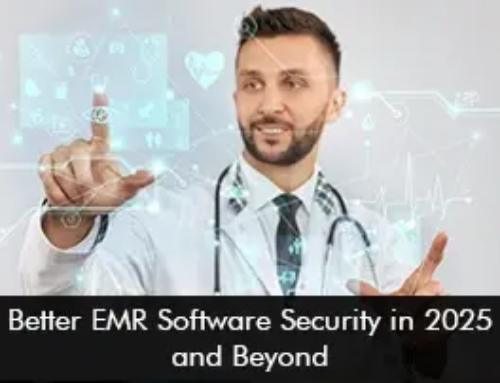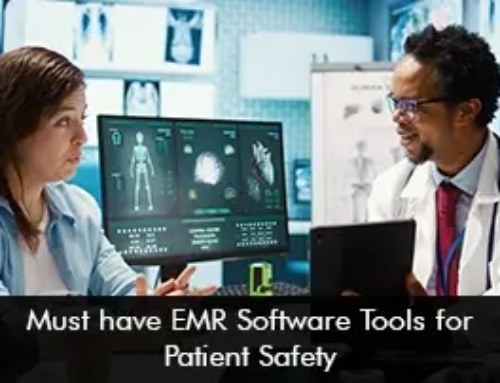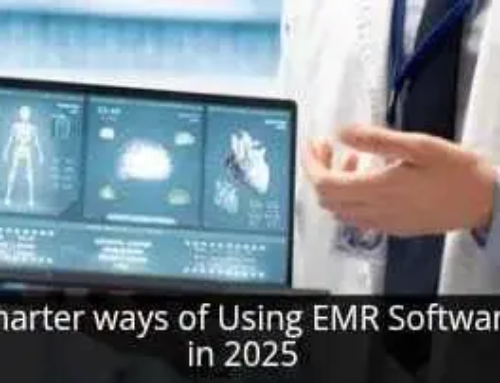EMR software continues to evolve, driven by advancements in technology and the ever-changing needs of the healthcare industry. As we approach 2025, providers and administrators must stay informed about emerging trends to ensure their systems remain relevant, efficient, and patient-focused. These trends shape how EMR software enhances care delivery, streamlines operations, and adapts to regulatory requirements.
This blog explores five key EMR software trends that healthcare professionals should watch in 2025 to future-proof their practices and improve patient outcomes.
Why Monitoring EMR Software Trends is Crucial
Keeping up with EMR software trends is more than just staying current—it’s about positioning your practice to leverage new technologies effectively. Evolving trends can enhance clinical workflows, improve patient engagement, and ensure compliance with data security regulations. Moreover, understanding these advancements can help healthcare providers make better decisions when upgrading or implementing new systems. By staying ahead of the curve, practices can remain competitive while meeting the growing expectations of both patients and regulatory bodies.
Artificial Intelligence and Machine Learning Integration
Enhancing Clinical Decision Support
Artificial Intelligence (AI) and Machine Learning (ML) are revolutionizing EMR software by improving decision-making and automating repetitive tasks. These technologies analyze vast amounts of patient data to provide actionable insights, helping providers identify trends, predict outcomes, and make informed treatment decisions. For instance, AI-powered tools can flag potential drug interactions, suggest diagnostic tests, or recommend treatment plans tailored to individual patients.
EMR Software Streamlining Administrative Tasks
Beyond clinical applications, AI and ML also reduce administrative burdens. These technologies can automate coding for billing, summarize lengthy clinical notes, and even optimize scheduling to minimize patient wait times. By integrating AI and ML, EMR systems enable providers to focus more on patient care while improving overall efficiency.
Greater Emphasis on EMR Software Interoperability
Breaking Down Data Silos
Interoperability remains a top priority for EMR software in 2025 as the demand for seamless data exchange grows. Advanced systems now support integration with other healthcare platforms, such as laboratories, pharmacies, and imaging centers, ensuring providers have access to comprehensive patient records. This connectivity improves care coordination, reduces redundant testing, and enhances patient safety.
Regulatory Push and EMR Software Standardization
Governments and regulatory bodies are driving the push for interoperability through standards like Fast Healthcare Interoperability Resources (FHIR). These initiatives promote standardized data formats, making it easier for EMR systems to communicate with one another. Practices adopting interoperable EMR solutions will be better equipped to meet these evolving requirements while providing better care.
EMR Software and the Rise of Patient-Centered Features
Empowering Patients with Portals
In 2025, EMR software will become increasingly patient-centered, focusing on tools that enhance engagement and self-management. Patient portals, a staple feature of modern EMRs, are evolving to provide more comprehensive functionalities. These include scheduling appointments, viewing lab results, and securely messaging providers. Empowering patients with access to their health data fosters transparency and encourages active participation in their care.
EMR Software and Integration of Wearable Devices
Another trend in patient-centered care is the integration of wearable devices into EMR systems. Data from fitness trackers, heart monitors, and glucose meters can now be uploaded directly into a patient’s record, giving providers a more holistic view of their health. This real-time data sharing improves chronic disease management and supports preventive care strategies.
Enhanced Focus on EMR Software Security and Compliance
Addressing Cybersecurity Threats
With the increasing digitization of healthcare, cybersecurity remains a critical concern for EMR software in 2025. Advanced encryption, multi-factor authentication, and automated threat detection are becoming standard features to combat cyberattacks and data breaches. As hackers employ more sophisticated techniques, EMR vendors are investing heavily in robust security measures to safeguard sensitive patient information.
Adapting to Changing Regulations
Regulatory requirements surrounding data security and patient privacy continue to evolve, placing additional demands on EMR systems. Compliance with laws like HIPAA in the U.S. or GDPR in the European Union is non-negotiable. In 2025, EMR software must incorporate compliance tools, such as built-in audit logs and customizable access controls, to help practices adhere to these regulations while minimizing risk.
Advanced Analytics and EMR Software Predictive Modeling
Unlocking the Power of Data
As EMR systems collect increasing amounts of data, advanced analytics tools are emerging to make sense of it. Predictive modeling, a growing trend in 2025, uses historical data to forecast future patient outcomes, such as readmission risks or the likelihood of disease progression. These insights allow providers to intervene early, improving patient outcomes and reducing healthcare costs.
EMR Software Supporting Operational Efficiency
Beyond clinical benefits, analytics tools are also transforming operational management. EMR systems equipped with advanced analytics can identify bottlenecks in scheduling, highlight trends in patient flow, and pinpoint areas for cost savings. Practices leveraging these tools gain a competitive edge by optimizing resources and improving overall efficiency.
How Practices Can Prepare for EMR Software Trends
Assess Current EMR Software Capabilities
Before adopting new features or technologies, evaluate whether your current EMR system supports these advancements. Conduct a gap analysis to identify missing functionalities and prioritize updates based on your practice’s goals and patient needs.
Invest in Staff Training
Introducing new technologies requires adequate training for both clinical and administrative staff. Ensure your team understands how to use new tools effectively, whether it’s an AI-driven feature or an upgraded patient portal. Providing ongoing education helps maximize the benefits of emerging trends.
Partner with Forward-Thinking Vendors
When selecting or upgrading EMR software, choose vendors committed to innovation and staying ahead of industry trends. Ask potential vendors about their roadmaps for AI integration, interoperability enhancements, and security updates. A forward-thinking partner ensures your system remains relevant as the industry evolves.
Conclusion
The future of EMR software is exciting, with 2025 promising transformative trends that enhance patient care, streamline workflows, and address security challenges. From AI-powered insights to interoperability and patient-centered features, these advancements are reshaping how healthcare providers interact with technology. By staying informed about these trends and preparing your practice to adopt them, you can ensure your EMR system remains a valuable asset in delivering high-quality care.
What EMR trends are you most excited about in 2025? Share your thoughts in the comments below!


